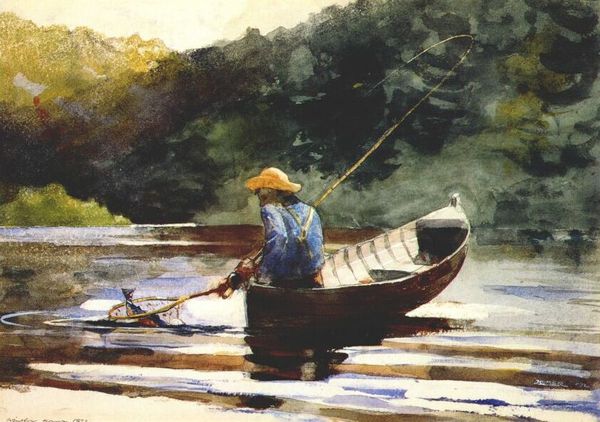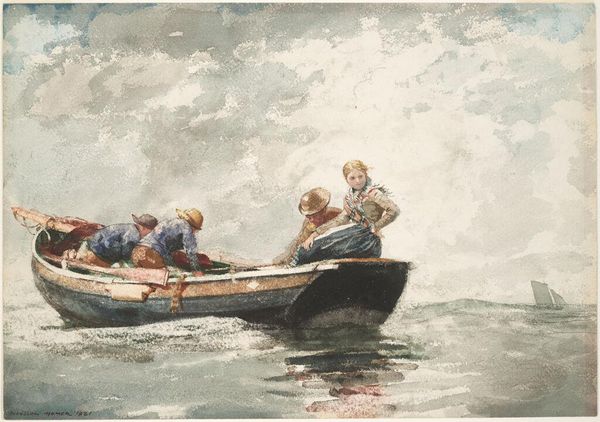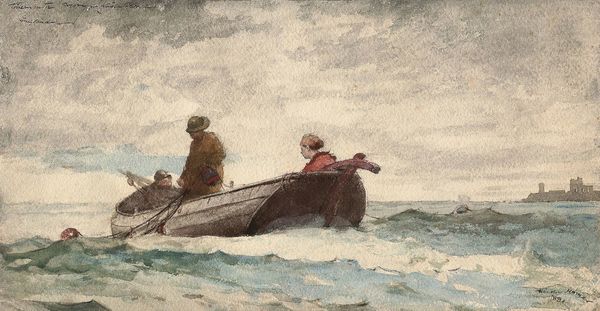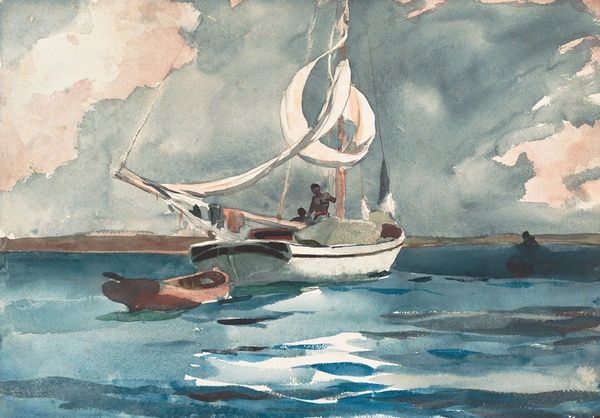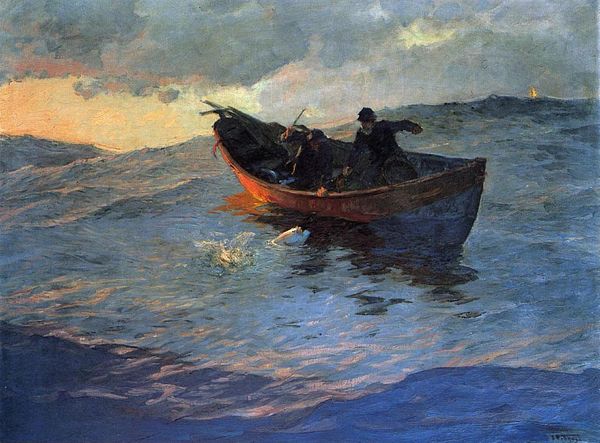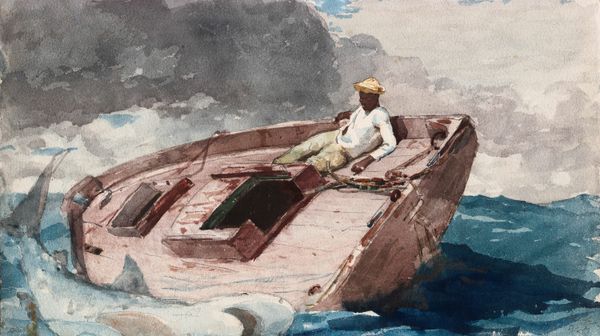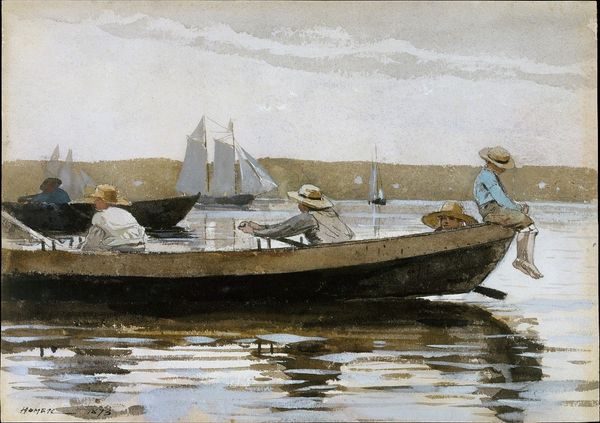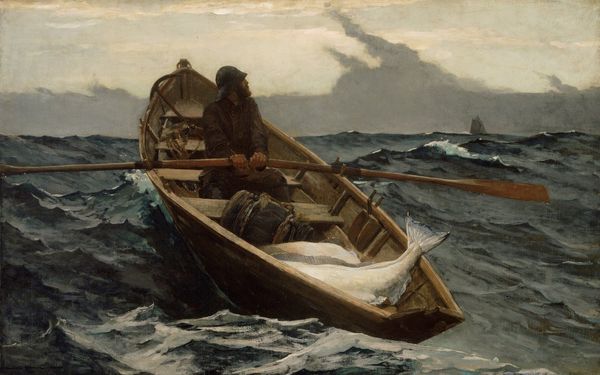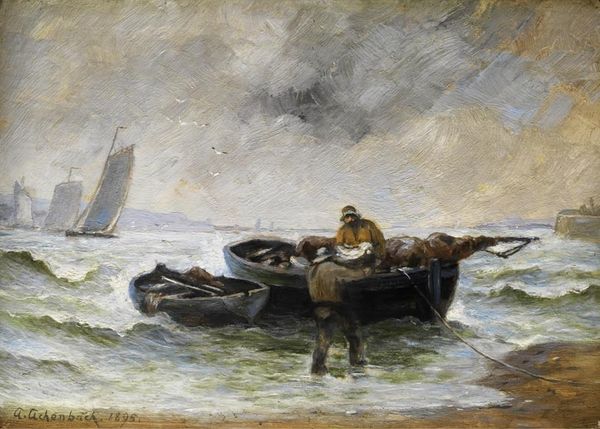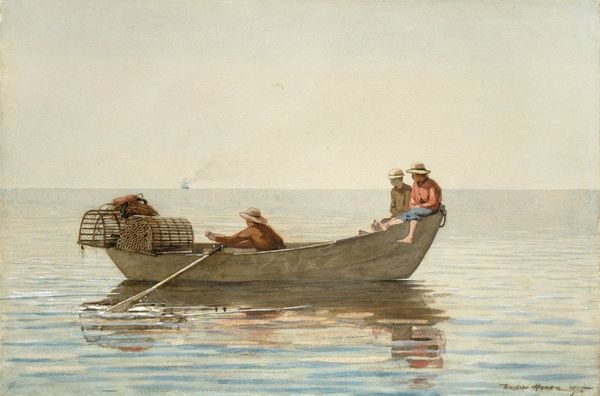
Copyright: Public Domain: Artvee
Editor: This is Winslow Homer’s "The Water Fan," painted around 1898-1899. The watercolor scene depicts a figure in a boat, focused intently on something. I'm immediately drawn to the textures he's created with the watercolor, the rough surface of the boat contrasting with the smoothness of the water. How do you interpret this work? Curator: Let's consider the physical process of making this watercolor. The paper itself—its sourcing, its quality—dictates how the pigment settles, how light reflects. Notice how Homer manipulates the water itself as a medium, letting it pool and bloom to suggest the vastness and uncertainty of the ocean. Think about what labor and skill were required to achieve this effect. The work almost celebrates process, doesn’t it? Editor: That’s fascinating. It makes me think about the availability of watercolor paints and paper at the time, too. Did that democratize art-making? Curator: Precisely. Homer's embrace of watercolor and plein-air techniques, brings art out of the studio and into the realm of the everyday. Who would have access to such paints? Were they readily available, or a commodity of status? How would access to these resources define what sort of painting one could make? The composition itself then shifts from simply being about aesthetic appeal to revealing a means and system of artistic output. Editor: So, by focusing on materials and processes, we can understand more about who made art and who had access to art. It really shifts the focus. Curator: Absolutely. And perhaps by examining such, we are equipped to challenge not only traditional boundaries between high art and craft but also appreciate the social landscape where the painting exists and from which it emerges. Editor: This gives me a completely new perspective on understanding artwork and production of all sorts! Curator: Exactly, and by examining it under a lens such as this, art pieces become not simply images to adore but also artifacts to contextualize, with an eye always attentive to its mode of production.
Comments
No comments
Be the first to comment and join the conversation on the ultimate creative platform.
